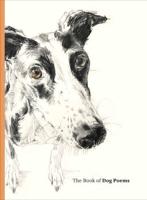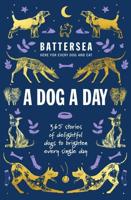Publisher's Synopsis
The Bulldog is a much different dog today than his ancestors. Descended from ancient mastiff-type dogs, the Bulldog breed was developed entirely in England. The first mention of the breed was in 1500, a description of a man "with two Bolddogges at his tayle..." The then-fierce dogs were used in a practice called bull baiting, which involved the dog grabbing onto the bull's nose and roughly shaking it.
Bull baiting actually had a purpose; it was thought to tenderize the bull's meat. For many years, this practice was said to "thin" the blood of the bull and make its flesh tender after it was butchered. This belief was so strong that many areas in England had laws requiring bulls to be baited before they were slaughtered.
More than that, it was a popular spectator sport in a time when there were no professional sports, TV shows, movies, or video games. The angry bull would toss the dog up in the air with its horns if it could, much to the delight of the watching crowd. The dog, on the other hand, would attempt to latch onto the bull, usually at its snout, and pin it to the ground through the force of its painful bite. Upcoming bullbaitings were advertised and crowds wagered on the outcome of the struggle.
These early Bulldogs were taller and heavier than today's Bulldog, and they were bred to be especially adept at this bloody sport. Typically, they crept on their bellies toward the enraged bull so he couldn't get his horns under their bodies and toss them up in the air. And their wide mouths and powerful jaws were impossible for the bull to shake off once the Bulldog had a firm hold on its snout. His short, flat nose enabled the Bulldog to breathe while holding onto the bull's snout. He needed to be tenacious to hang onto the bull no matter how much the bull tried to shake him off. The Bulldog's high tolerance for pain was developed to enhance his ability to excel at this barbarous spot. Even the wrinkles on his head are said to have had a purpose: to direct the blood that resulted from his grip on the bull to flow away from his eyes so he wouldn't be blinded.
In 1835, after many years of controversy, bullbaiting was outlawed in England, and many thought the Bulldog would disappear since he no longer had a purpose. At the time, the Bulldog wasn't an affectionate companion. The most aggressive and courageous dogs had been selectively bred for generations to be bull-baiters. They lived to fight with bulls, bears and anything else that was put before them. It was all they knew.
Despite this, many people admired the Bulldog's stamina, strength, and persistence. These few decided to save the appearance and breed them to have a sweet, gentle temperament instead of the aggression needed for the baiting arena.
And so the Bulldog was re-engineered. Dedicated, patient breeders started selecting only those dogs that had a docile temperament for breeding. Aggressive and neurotic dogs weren't allowed to reproduce. By focusing their attention upon the temperament of the Bulldog, these breeders transformed the Bulldog into the gentle, affectionate dog we see today.









